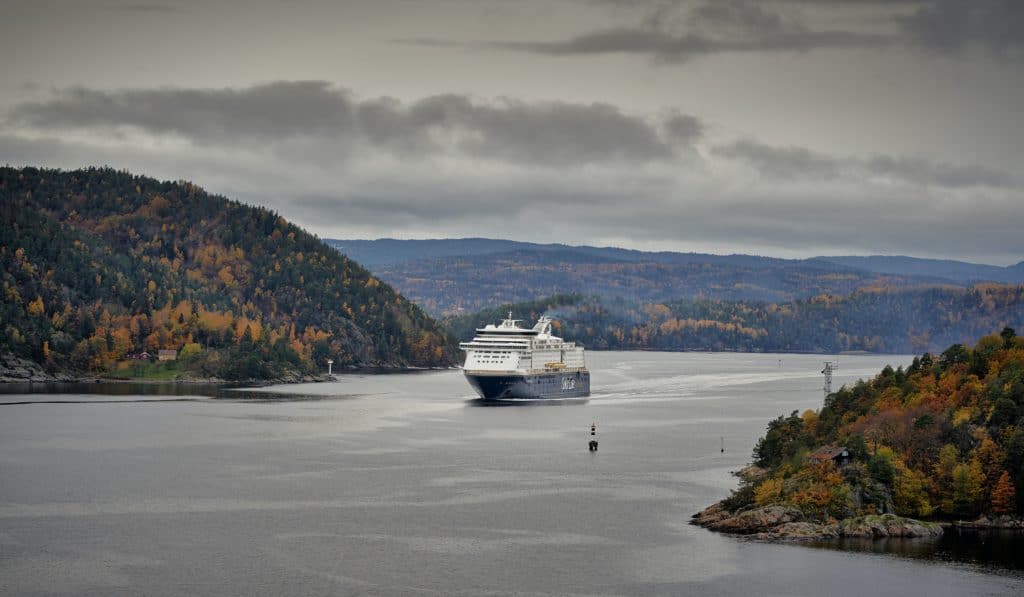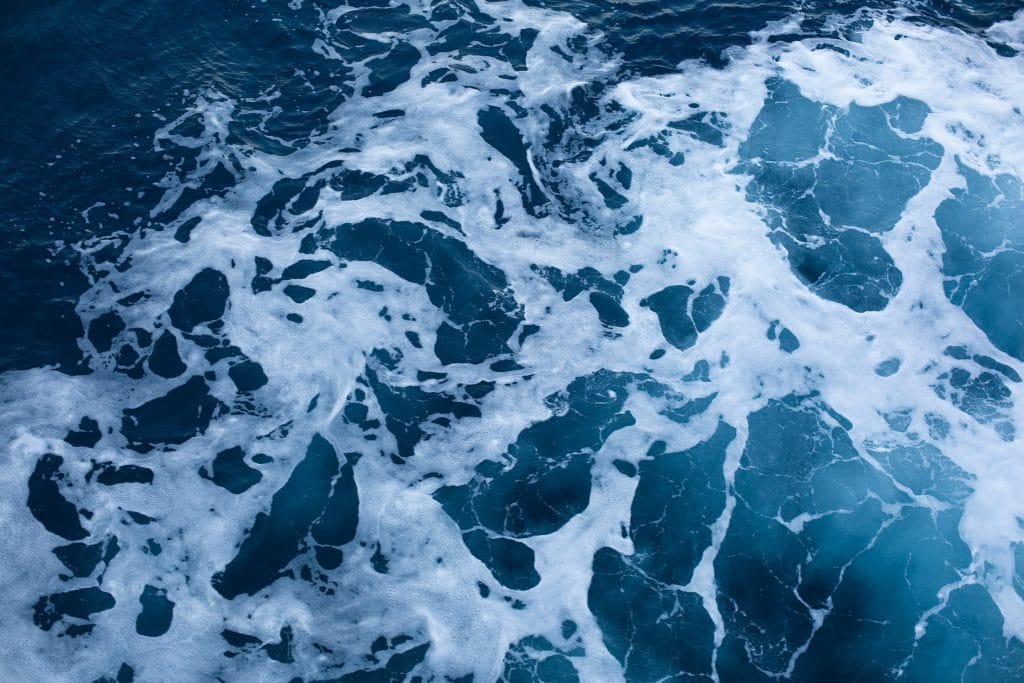The trouble with scrubbers: shipping’s emissions “solution” creates new pollution

For the past 60 years, the global shipping fleet has mostly run on high-sulfur heavy fuel oil (HFO), a tar-like byproduct of the crude oil distillation process. Highly toxic when burned and notoriously difficult to clean when spilled, HFO reigned supreme for decades because of its relatively low cost.
But with mounting evidence of ship emissions as a source of acid rain and respiratory illness, the true cost of HFO revealed itself. In response, MARPOL Annex VI (the key piece of international legislation on air pollution from ships) was adopted in 1997. Since coming into force in 2005, Annex VI has progressively reduced sulfur oxides, nitrogen oxides, and particulate matter emissions from ships.
Under Annex VI, the allowable sulfur content of marine fuels has decreased from 4.5 per cent prior to 2012 to 0.5 per cent as of January 1, 2020. In special emission control areas (ECAs), the sulfur content limit for fuels is 0.1 per cent. The sulfur content of HFO is about 3.5 per cent by mass.
Rather than rendering HFO unusable, Annex VI includes an exception which allows compliance through equivalent means. This means burning non-compliant fuel like HFO is legal if a vessel uses a technology to ensure smokestack emissions are equivalent to emissions produced by a compliant fuel like marine gas oil. However, some studies suggest that scrubber-equipped vessels burning HFO may not actually succeed in achieving equivalent emissions as vessels that simply use cleaner fuels without a scrubber.
Enter scrubbers
Scrubbers are exhaust gas cleaning systems that allow ships to continue burning this harmful but cheaper fuel. Alongside maximizing profits, scrubbers also cause acidification and pollution in the marine environment.
Scrubbers route exhaust gases into a chamber that uses a fine spray of “washwater” to remove sulfur oxides and other pollutants before venting into the atmosphere. Scrubbers are broadly classified into three types. Open-loop scrubbers, which account for more than 80 per cent of scrubber installations, use a continuous flow of seawater that gets discharged into the ocean in a contaminated and acidic state. Closed-loop scrubbers use freshwater treated with alkaline chemicals and periodically dump smaller volumes of more concentrated waste. About 17 per cent of scrubbers are hybrid systems that can function in either open- or closed-loop mode.
Open, closed or hybrid, the issue with scrubbers is that they don’t eliminate air pollution – they just transform it into water pollution.

Scrubbers and ocean acidification
Oceans are thought to be acidifying faster than at any other point during the past 300 million years because they’re absorbing so much carbon dioxide from the atmosphere. Surface seawater today is about 30 per cent more acidic than in pre-industrial times, and that may increase by another 120 per cent by the end of the century.
And that’s before scrubbers are accounted for.
HFO exhaust gases contain sulfur and nitrogen oxides which form strong acids in the presence of water, producing washwater potentially more than 100,000 times more acidic than the seawater it’s discharged into. Considering acid rain was one of the reasons Annex VI was adopted, permitting scrubbers to discharge acidic washwater is both ironic and alarming.
A report recently commissioned by WWF-Canada found that just 30 scrubber-equipped ships were responsible for dumping 35 million tonnes — or the equivalent of 14,000 Olympic swimming pools — of washwater off the coast of British Columbia in 2017. Globally, it’s estimated that more than 4,000 ships have either installed or ordered scrubbers as of 2020 for a ten-fold increase since 2017.
Those supporting scrubbers say that diluting acidic washwater is a legitimate solution, citing the IMO’s 2015 Guidelines on Exhaust Gas Cleaning Systems. But recent studies suggest otherwise. In the North Sea, scrubbers could become equal to about 12 per cent of greenhouse gas-induced acidification. In high-traffic areas, such as the port of Rotterdam, acidic washwater may have double the impact of CO2.
Then there’s the issue of alkalinity, which represents seawater’s capacity to resist changes in pH that would make it more acidic. Areas with naturally lower alkalinity (including most coastal regions and the Arctic) can be even more susceptible to acidification. Many coastal regions already have high volumes of shipping traffic and Arctic shipping traffic is anticipated to grow substantially within coming decades.
The wildlife costs of acidification
Acidic conditions make it difficult for calcifying marine animals to grow and maintain skeletons and shells, including microscopic calcifying algae that form the base of the marine food web. Acidic conditions also affect fish, who expend extra energy to regulate their body’s pH which can slow growth, affect reproduction and decrease their ability to fight disease and escape predators. In turn, marine mammals and people may face diminishing supplies of wildlife. Acidic conditions can also release toxic metals that are normally bound to sediments, enhancing their likelihood of entering the marine food web and providing a route of exposure to people.
The strong acids in scrubber washwater also reduce the ability of the ocean to regulate the global carbon cycle – one of our greatest natural buffers against climate change. A recent modelling study suggests that for every ton of sulfur dioxide injected into the ocean by scrubbers, the ocean will not absorb about half a ton of CO2. Others have come to similar conclusions. This means that not only will the oceans continue to acidify, but that the rate of global climate change could be accelerated if scrubber use continues.
Recommendations
Special restrictions on scrubbers exist in 24 countries, with 16 banning discharges from open-loop scrubbers at one or more of their ports — including Brazil, China, Germany and the U.S. But no such bans or restrictions exist in Canada, though the Fisheries Act and Arctic Waters Pollution Prevention Act contain the regulatory scope to prohibit open-loop scrubbers on all three coasts.
Port Authorities, including Canada’s largest port in Vancouver which aspires to be “the world’s most sustainable port,” have the power and responsibility to act locally, yet they still allow scrubbers.
Internationally, open-loop scrubbers conflict with the United Nations Convention on the Law of the Sea, Articles 192, 194, 195, and 196, which relate to protection and preservation of the marine environment. Article 195 specifically says that it is the duty of States to not transform one type of pollution into another. So why are scrubber-equipped vessels permitted to transform air pollution into marine pollution?
Given all these growing concerns, WWF-Canada is calling for a ban on open-, hybrid, and closed-loop scrubbers within Canada’s exclusive economic zone.

